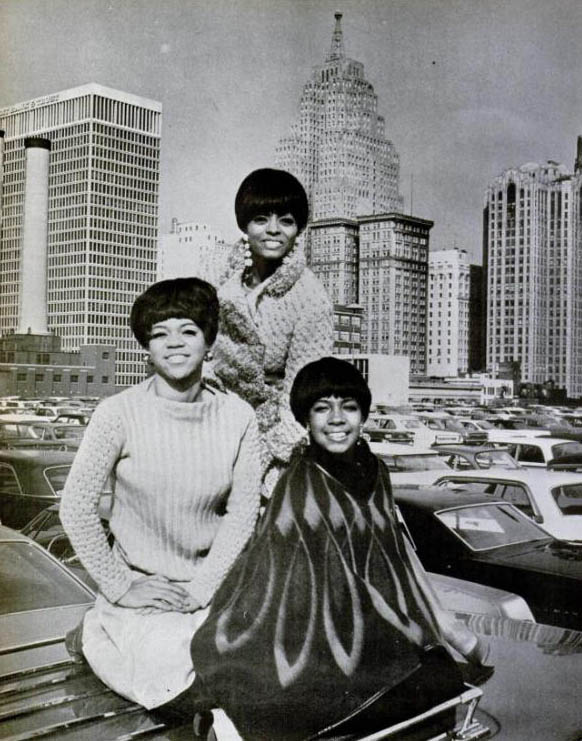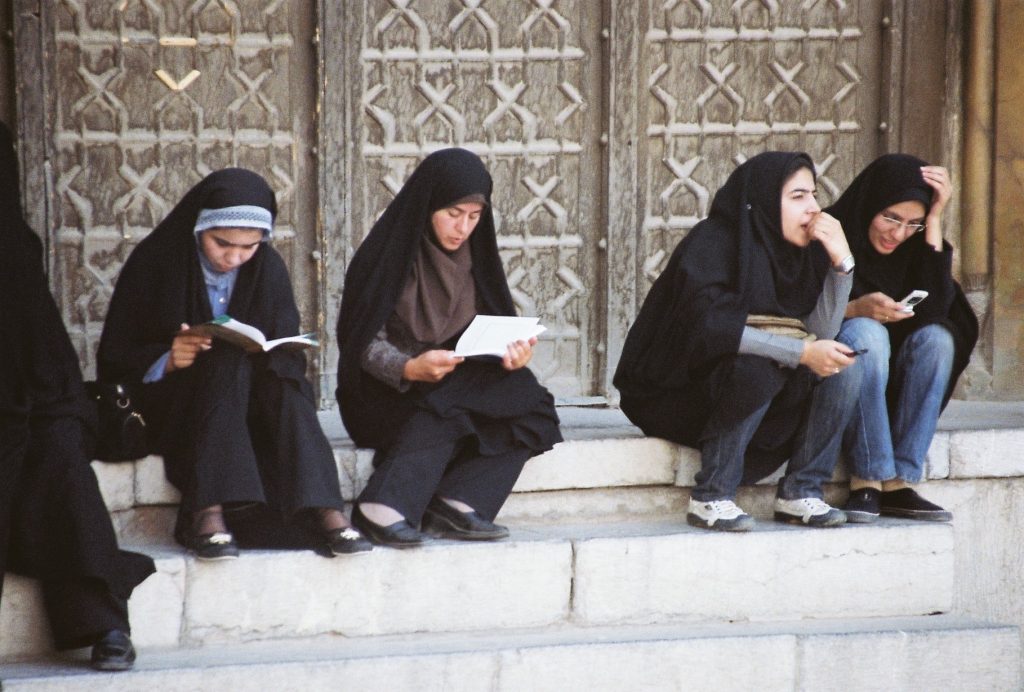Nonfiction by Suzanne E. Smith from the Fall 2010 issue of MQR.
In the conclusion of my book Dancing in the Street: Motown and the Cultural Politics of Detroit, I described the fanfare that surrounded the fortieth anniversary of Motown Records, which included a commemorative compact disc boxed set, an ABCTV documentary miniseries, and a special Motown halftime show at the Super Bowl. The show culminated with Martha Reeves singing her signature song, “Dancing in the Street.” As I noted, “[b]y the time the song reached one of its most famous lines, ‘Can’t forget the Motor City,’ nothing seemed more forgotten than Detroit, Michigan, Motown’s birthplace.” Now, ten years later, it has been equally powerful to witness the commemoration of Motown’s fiftieth anniversary. In many respects, the distance between Motown’s celebrated musical legacy and its hometown seem greater than ever. The disconnect between the music and the city can be partly attributed to the fact that while the popularity of Motown’s music continues to thrive, the city of Detroit—at least according to popular opinion—is dying. Put another way, the story of Detroit’s demise is hard to reconcile with the sunny optimism of most Motown hits. The death of Detroit is, of course, not confirmed and is a narrative that needs to be challenged. My latest book, To Serve the Living: Funeral Directors and the African American Way of Death, offers new ways to think about Motown’s legacy and Detroit’s history and future.1
When I first began research on my funeral director study ten years ago, many people, who assumed that my next project would or should be about popular music, were surprised and sometimes upset about it. I repeatedly found myself defending my decision to study death, explaining that it was a very provocative subject for anyone interested in the history of African American culture. By 2009, when I was finishing the book and Motown was celebrating its fiftieth anniversary, my interest in death came to seem much more prophetic than it did when I began. By May 2009, I was interviewed by the Detroit Free Press to offer my thoughts on General Motors’ bankruptcy and the “death” of the American auto industry. And then, in July 2009, when Michael Jackson died suddenly and unexpectedly, a whole new public dialogue opened up about death, funerals, and Motown memories. In the past year, the popular press has continued to be fixated on Detroit’s death knell, as seen in recent cover stories in Time magazine and the New York Times Magazine.2
Given these circumstances, I would like to explain more specifically how my study of funeral directors and death grew out of my Motown research. First, Motown’s Hitsville Studios on West Grand Boulevard, which is now the Motown Historical Museum, sits directly adjacent to the James H. Cole Funeral Home at 2640 West Grand Boulevard. When I was doing research on the Funk Brothers, Motown’s studio band, I was always intrigued by the stories of the musicians hiding out and partying at Cole’s Funeral Home to escape Berry Gordy’s unrelenting recording sessions. It made me think about the demands of labor at Motown Studios, but also about the unexpected activities that occurred at a local black funeral home. During the era of Jim Crow segregation, funeral homes were often one of the few public spaces available to African Americans outside of the black church. For this reason, funeral directors regularly offered their homes for social gatherings, community organizing, and even weddings. Secondly, at one point in my Motown research, I came across an advertisement for the House of Diggs Funeral Home in the Michigan Chronicle. The House of Diggs Funeral Home, owned by Charles C. Diggs, Sr. and Jr., was one of the most successful black funeral homes in the country. The advertisement read, “No one serves the living like Diggs.” This simple phrase sparked my curiosity about exactly how funeral directors served the living in black communities, which for the Diggs family involved running for political office in the Michigan state legislature and the U.S. House of Representatives as well as hosting a weekly House of Diggs radio show focused on community programming. Finally, on a much more personal note, I have a very distinct memory as a child of sitting at the kitchen table in my grandparents’ house in Warren, Michigan, and having my grandmother tell me that one of the Supremes was buried in her backyard. My grandparents’ house abutted the Detroit Memorial Park, the historic black cemetery, which was, in fact, where Florence Ballard was laid to rest in 1976.

This last story is perhaps most relevant to my discussion today as it directly ties the life and death of the classic Motown era to the larger history of the African American way of death. To look first at Motown’s part of the story, Florence Ballard’s rise and fall clearly paralleled a larger story about Motown’s heyday and the subsequent limits of that success in the lives of some of its artists. The arc of Florence Ballard’s career, in other words, illustrates how the metaphor of the Motown “family” eventually was completely consumed by the Motown hit “factory,” which had to put profits ahead of loyalty to individual artists or the local community.
The story of the Supremes included all the elements of the archetypal Motown tale of success. Their beginnings as the local high school group, the Primettes, provided the necessary element of youthful, hometown origins. Their first big hit, “Where Did Our Love Go?,” had the nice twist of improbability since the song seemed so limited in its appeal—literally “dead on arrival.” As Mary Wilson noted in her autobiography, “To my ears, ‘Where Did Our Love Go?’ was a teenybopper song. It had childish, repetitive lyrics . . . a limited melody, and no drive. It was too smooth, and I couldn’t imagine anyone liking it.” Despite these predictions, the song moved quickly up the charts—with the help of aggressive marketing to white audiences on Dick Clark’s Caravan of Stars summer tour—and catapulted the Supremes into super stardom. The rest, as they say, is history. Interestingly enough, as I noted in Dancing in the Street, the Supremes’s last single as “the Supremes,” was “The Happening,” released in March 1967. The song, eerily familiar to “Where Did Our Love Go?” in the theme of love lost, reached number one on the pop charts in May 1967. When Motown released their next record, “Reflections,”on July 24, 1967, both the group, which was now known as Diana Ross and the Supremes, and the city of Detroit would never be the same.3
July 24, 1967, of course, marked the first full day of rioting in Detroit’s “Great Rebellion,” which lasted over a week and has come to be seen—in popular collective memory, at least— as the first major cause of Detroit’s “death” as a thriving industrial city. Historians, most notably Thomas Sugrue, have effectively argued that Detroit’s declension narrative did not actually begin in 1967, but can be traced back to deindustrialization and automation, which began back in the 1940s and 1950s. Nevertheless, it is important to note that in the recent press coverage about Detroit’s current economic crisis, July 1967 still looms large. Daniel Orkent’s Time magazine cover story about the “tragedy of Detroit” describes the 1967 riot as “the product of an unarticulated racism that few had acknowledged . . . [which] sent thousands of white Detroiters fleeing for the suburbs.”4
For the Supremes, the release of “Reflections” marked the official end of Florence Ballard’s career in the group. Ballard—as I wrote in Dancing in the Street—had buckled “under the stress of celebrity life—always in the public eye and in [Diana] Ross’s shadow.” Berry Gordy could not tolerate Ballard’s inconsistent behavior and drinking problems and replaced her with Cindy Birdsong, who made her first official appearance with the group at a concert in April 1967 at the Hollywood Bowl. Birdsong’s striking resemblance to Ballard facilitated the Motown hit factory’s ability to use “interchangeable parts” to maintain the product that had become Diana Ross and the Supremes.5
For Ballard, it was the symbolic end of her relationship to the Motown “family”—a loss from which she would never fully recover. When she finally died of a heart attack at the age of thirtytwo in March 1976, Ballard left behind three children and an estate that Jet magazine reported would “zero out” to pay the debts she left behind. Jet also noted that even at her own funeral, Ballard was upstaged as “dispassionate onlookers snapped cameras, cheered and attempted to get autographs from Diana Ross, Mary Wilson, Stevie Wonder and the Four Tops when they entered Detroit’s New Bethel Baptist Church” for the service. At several times during the proceedings, the Reverend C. L. Franklin had to admonish the crowd of three thousand mourners to settle down and at one point reminded them that, “this is a funeral.” The tragedy of Ballard’s death was so deep and complicated that it was completely written out of the fictional story of the Supremes in the Broadway show (and eventual Hollywood film) Dreamgirls, which chose instead to have the character based on Ballard alive and redeemed at the end of the musical.6
I would like to argue, however, that there is redemption to be found in Ballard’s story, not the fictional kind found in Dreamgirls, but a more concrete one found in both Motown’s success as an independent business and in the African American way of death. It is also a story that offers ideas about how the city of Detroit could reinvent itself by viewing its own supposed death in new ways.

In the case of Florence Ballard’s death, I would like to shift the focus from her funeral to the history of the Detroit Memorial Park, the cemetery in which she is buried. Beginning in colonial times, racial discrimination in cemeteries involved burying blacks in segregated areas of white cemeteries, which were usually located in the least desirable margins of the larger cemetery. By the late nineteenth century, these practices became much more prevalent as Jim Crow segregation began to pervade all aspects of daily life and death. As a response, many black communities worked to establish their own cemeteries to ensure that their deceased family members could truly rest in peace.7
The founding of the Detroit Memorial Park exemplified how African American funeral directors fought racial discrimination in death as a means to support black economic cooperation in life. Charles C. Diggs, Sr., one of the leading black funeral directors in Detroit, originally proposed the idea of establishing a blackowned cemetery to a small group of the city’s black funeral directors in early 1925. Diggs began his business, the House of Diggs, in 1921, and it quickly became one of most profitable black businesses in Detroit. For Diggs, founding the Detroit Memorial Park was a direct way to respond to the racism black customers experienced at white cemeteries in the city. Detroit’s white cemeteries discriminated against black customers in any number of ways, including restricting black burials to specific days or during unpopular hours, insisting that black funeral processions use side or back entrances to the cemetery, and regularly overcharging black patrons. At the funeral directors’ initial meetings to discuss the project, they imagined a cemetery that charged reasonable rates to anyone, regardless of race, who wanted to bury their deceased with dignity.8
Diggs had a very wellconceived plan for launching the new cemetery, which would become the first African American corporation in Michigan. In June 1925, he asked twenty subscribers—including some of his fellow funeral directors—to each invest in five shares of stock to start the new company. Each share was worth $250.00 and the $25,000 raised was then used to purchase sixty acres of land located in Warren Township, the allwhite suburb located north of the city of Detroit. When Diggs and his colleagues first purchased the land, they did not face any initial resistance to the project. Yet, when local whites discovered that the cemetery’s black superintendent and family would reside in a farmhouse on the property, a local protest arose to stop the project. In a move to secure the property for its designated use, Diggs and one of his fellow funeral directors quickly buried the body of a stillborn infant to ensure that the land could not be reclaimed for other purposes. The cemetery conducted its first adult burial in November 1926.9
In its early years, the Detroit Memorial Park faced several challenges, including maintenance of the grounds, which were plagued by water drainage problems. In 1928, the corporation faced another major setback when the Michigan Mutual Savings Bank, which had loaned the cemetery its mortgage money, failed and was taken over by the state. Nevertheless, even in the difficult early years of the Great Depression, the company, largely through the generosity of its board of directors, was able to honor all of its financial commitments to its stockholders. By the 1940s, the Detroit Memorial Park not only had achieved its own financial stability, but also offered home loans to black Detroiters who were denied financial aid from whiteowned banks. By using the funds from the Detroit Memorial Park to finance mortgages, the funeral directors who founded the cemetery created a viable means to private homeownership for African American Detroiters who were regularly discriminated against in the city’s real estate market. The Detroit Memorial Park, in other words, served the living as much as it literally buried the dead.10
Unfortunately, I don’t have any evidence that Berry Gordy got a home loan from the Detroit Memorial Park to purchase Hitsville Studios on West Grand Boulevard, although it would fit nicely into the story I am trying to tell about Motown and Detroit and how death can serve life. What Hitsville Studios and Detroit Memorial Park have in common is what they symbolize about how small entrepreneurial ventures that start from almost nothing can lead to other opportunities to serve their communities in a multitude of unexpected ways. Although I am no Pollyanna when it comes to assessing Detroit’s current economic crisis, I was struck just last month by two news stories that I read about the city. One, in the Washington Post, reported on a new Washington Post–Kaiser Family Foundation–Harvard University poll, which found that although almost all of the residents of “the main threecounty metropolitan area see their economy in ruins,” a large majority of these residents express optimism that things will get better economically over the next decade. Another article, published in the New York Times, focused specifically on how this optimism manifests itself in the rise of small entrepreneurs who are opening new businesses in Detroit’s downtown area. The article looked at the Burton Theater, the city’s only independent foreign movie theater, located in the Cass Corridor; a crêperie, Good Girls Go to Paris; and my favorite— given the themes of this paper—Curl Up and Dye, a retrothemed hair salon serving fifteen hundred clients. I found in the stories of these small businesses the most hopeful news I have read about Detroit in a long time. The businesses do reflect the “never give up” spirit that makes the city such a compelling place for so many.11
These recent news stories also reaffirm my sense that in spite of all the attention Motown music receives when assessing its fiftyyear history and longterm legacy, it is the history of Motown as a small local business that might be more important to how we think about Detroit’s future. The humble beginnings of Hitsville, U.S.A., which started in a singlefamily home on West Grand Boulevard, launched a business enterprise that went on to have both national and international influence. The astonishing trajectory the Motown Record Company can continue to inspire Detroit’s local economy to redefine itself and look for possibilities in unconventional places. Furthermore, the history of Detroit Memorial Park should remind us that “death” can signal the possibility of rebirth in ways that are often unforeseen, but nevertheless redemptive.
NOTES
1 Suzanne E. Smith, Dancing in the Street: Motown and the Cultural Politics of Detroit (Cambridge, MA: Harvard University Press, 1999), 247; Suzanne E. Smith, To Serve the Living: Funeral Directors and the African American Way of Death (Cambridge, MA: The Belknap Press of Harvard University Press, 2010).
2 Bill McGraw, “GM’s Powerful History Still A Source of Pride,” Detroit Free Press, May 31, 2009; Daniel Orkent, “Detroit: The Death—and Possible Life—of Great City,” Time Magazine, October 5, 2009; and Jonathan Mahler, “G.M, Detroit, and the Fall of the Black Middle Class,” New York Times Magazine, June 24, 2009.
3 Mary Wilson, Dreamgirl: My Life as a Supreme (New York: St. Martin’s Press, 1986), 171–178; Smith, Dancing in the Street, 181.
4 Thomas J. Sugrue, The Origins of the Urban Crisis: Race and Inequality in Postwar Detroit (Princeton, N.J.: Princeton University Press, 1996); Daniel Orkent, “Detroit: The Death—and Possible Life—of Great City.”
5 Smith, Dancing in the Street, 181.
6 “Sad Song For Florence: Estate May ‘Zero Out,’ ” Jet, Vol. XLIX, No. 25, (March 18, 1976): 54–55.
7 For more on the history of racial segregation in cemeteries, see Angelika KrügerKahloula, “On the Wrong Side of the Fence: Racial Segregation in American Cemeteries,” in History and Memory in AfricanAmerican Culture, ed. Geneviève Fabre and Robert O’Meally (New York: Oxford University Press, 1994).
8 Roberta Hughes Wright, Detroit Memorial Park: The Evolution of an American Corporation (Southfield, MI: Charro Book Company, 1993), 19.
9 Wright, 24–25.
10 Wright, 25–28, 55–56.
11 Dana Hedgpeth and Jennifer Agiesta, “Poll of Detroit Residents Finds Grim Conditions, But Optimistic Outlooks,” Washington Post, January 2, 2010; and Susan Saulny, “Detroit Entrepreneurs Opt to Look Up,” New York Times, January 10, 2010.




